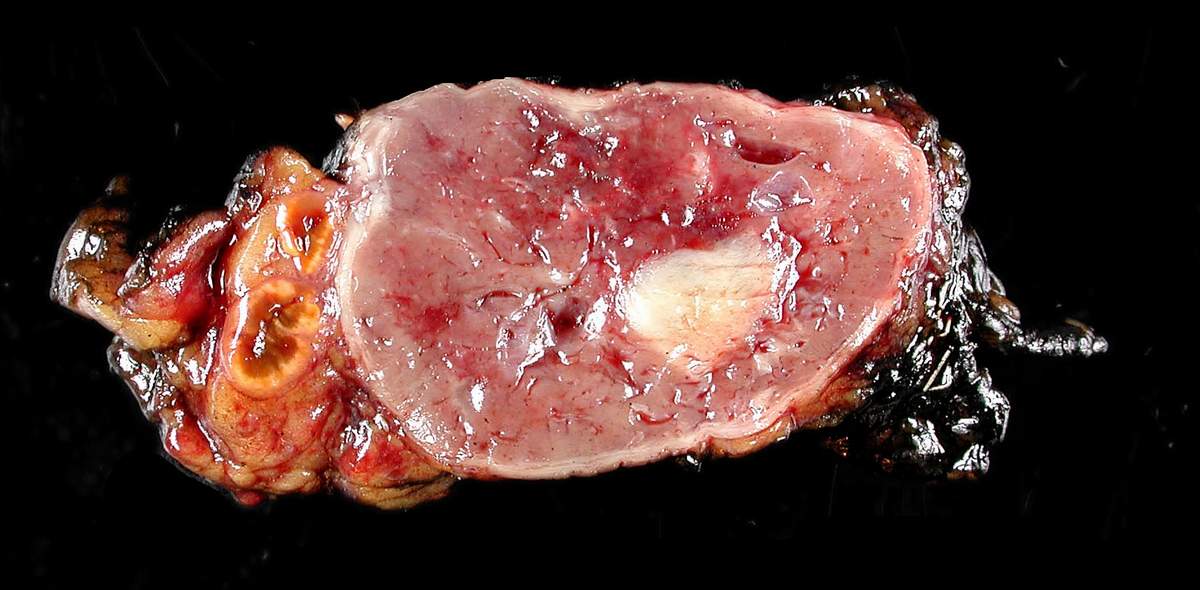Playlist
Show Playlist
Hide Playlist
Resulting Condition: von-Hippel-Lindau Disease
-
Slides Cellular Pathology - Degradation.pdf
-
Reference List Pathology.pdf
-
Download Lecture Overview
00:01 So, this is normoxia. We have the Von Hippel-Lindau protein. 00:05 It's actually -- it phosphorylated, binding to the conformational rearrangement with the hydroxylated HIF-1-alpha, inducing ubiquitin to bind, and we get it degraded. 00:15 Awesome. What happens if our Von Hippel-Lindau can't bind? So, this is showing hypoxia. That's the appropriate response. 00:26 It can't bind, we don't degrade HIF-1-alpha, we get all those wonderful benefits of having the HIF-1-alpha go to the nucleus. 00:32 Now, we have a mutated protein. 00:35 This one cannot bind to the hydroxylated HIF-1-alpha. 00:40 So, even though we have normal levels of oxygen and normal HIF-1-alpha kind of responses, it's undergone this proline hydroxylation. 00:47 The phosphorylated Von Hippel-Lindau cannot bind. 00:51 And so, now, we're not degrading the HIF-1-alpha. 00:54 And now, we have a lot of the transcriptional activity. 00:57 That's what happens in the disease, Von Hippel-Lindau syndrome. 01:01 So, it's loss of the function of the VHL, the Von Hippel-Lindau tumor suppressor gene, cuz that's what it is. 01:08 It's part of the ligase complex involved in making HIF-1-alpha degrade. 01:13 Also involved with HIF-2-alpha, another story for a different day. 01:17 You get increased HIF accumulation, just as we said, and increased cellular proliferation and diminished apoptosis. 01:25 So, the cells are proliferating. 01:27 And depending on which cells have a lot of HIF-1-alpha or feel hypoxia normally, they're not getting the appropriate signal. 01:34 So, we get a lot of cysts and benign tumors due to unregulated proliferation. 01:40 In many cases as those cells proliferate, they accumulate additional mutations leading to renal cell cancer, tumors of the adrenal medulla, and pancreatic neuroendocrine tumor. 01:52 So, we get a variety of tumors where Von Hippel-Lindau is an important tumor suppressor factor. 01:58 And we could also get hemangioblastomas of multiple organs, including the brain, spinal cord, and eye, and that's what's shown in the panel B. 02:06 Okay, so that's an example of proteosome degradation of little things, and a disease associated with a defect in degrading little things like a transcription factor.
About the Lecture
The lecture Resulting Condition: von-Hippel-Lindau Disease by Richard Mitchell, MD, PhD is from the course Cellular Housekeeping Functions.
Included Quiz Questions
Which of the following conditions is commonly associated with von Hippel-Lindau disease?
- Cerebral hemangioblastoma
- Bilateral meningioma
- Café au lait spots
- Adrenocortical adenoma
- Cardiac rhabdomyosarcoma
Customer reviews
5,0 of 5 stars
| 5 Stars |
|
5 |
| 4 Stars |
|
0 |
| 3 Stars |
|
0 |
| 2 Stars |
|
0 |
| 1 Star |
|
0 |





